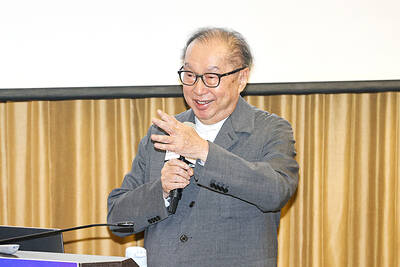Siemens AG and Samsung Elec-tronics Co are among mobile-phone makers facing a tougher time convincing telephone companies to pick their new handsets as the service providers reduce their offerings to consumers.
"This market is a fashion market -- every year you have three, four or five phones that do particularly well," said Guy Demuynck, the head of Royal KPN NV's mobile division, in an interview earlier this week at the CeBIT technology fair in Hanover, Germany. "Maybe we'll be selling 40 or 50 this year, but it's more likely to be less than more."
Mobile-phone makers are unveiling more handsets in a bid to win market share, leading to mounting competition, price pressure and shrinking margins.
T-Mobile International AG, Germany's biggest wireless operator, said in January it plans to cut the number of handsets it offers to as few as 30 from more than 50 as it reduces costs by slimming down its offerings and cutting discounts on phones.
Munich-based Siemens, which slipped in global mobile-phone rankings last year, plans to introduce 15 phones this year, including the new 75-series models unveiled this week. By comparison, Seoul-based LG Electronics Inc and Nokia plan about 40 devices each, and London-based Sony Ericsson Mobile Communications Ltd has said it will unveil more than 25.
Phone makers are also offering exclusivity. Bonn-based T-Mobile said yesterday it will be alone in selling two Sony Ericsson models in European markets. The operator also plans to carry five new phones for third-generation, or 3G, services from Sony Ericsson, Samsung, Nokia and LG Electronics from this month.
Among the phones Samsung unveiled at CeBIT is the SGH-D600 model with a two-megapixel camera. Another is the SGH-Z700 that supports the third-generation universal mobile telecommunications system (UMTS) technology and has a three-megapixel camera.
Vodafone Group Plc, Germany's second-largest wireless operator, said yesterday it will add five new UMTS devices this year, including the first UMTS phone that Japan's Toshiba Corp has made for Europe, to the seven models it has been selling.
Siemens' new 3G phone, featuring a music player and two built-in cameras, hasn't been selected by Vodafone. The Siemens phone, called SXG75, will go on sale in September.
Siemens introduced the five phones at the show to compete with offerings on display from rivals, including Nokia and LG Electronics.
Siemens lost its No.4 ranking in the mobile-phone market to LG in the fourth quarter of last year, according to researcher Gartner Inc, and is evaluating options for the unit that include a sale or partnership.
"The look of the new phones is OK, but with Siemens you can never be quite sure if their products will deliver," said Joern Waschke, a visitor to the Siemens stand at Cebit yesterday.
Siemens has had difficulty getting new phones to shops on time, communications unit head Lothar Pauly said at a press conference in Munich this week. He also said last month that Siemens is late with new UMTS models as competitors including Schaumburg, Illinois-based Motorola Inc, Nokia and Japan's Sharp Corp already have devices for sale at operators' stores.

BYPASSING CHINA TARIFFS: In the first five months of this year, Foxconn sent US$4.4bn of iPhones to the US from India, compared with US$3.7bn in the whole of last year Nearly all the iPhones exported by Foxconn Technology Group (富士康科技集團) from India went to the US between March and last month, customs data showed, far above last year’s average of 50 percent and a clear sign of Apple Inc’s efforts to bypass high US tariffs imposed on China. The numbers, being reported by Reuters for the first time, show that Apple has realigned its India exports to almost exclusively serve the US market, when previously the devices were more widely distributed to nations including the Netherlands and the Czech Republic. During March to last month, Foxconn, known as Hon Hai Precision Industry

Taiwan Semiconductor Manufacturing Co (TSMC, 台積電) and the University of Tokyo (UTokyo) yesterday announced the launch of the TSMC-UTokyo Lab to promote advanced semiconductor research, education and talent development. The lab is TSMC’s first laboratory collaboration with a university outside Taiwan, the company said in a statement. The lab would leverage “the extensive knowledge, experience, and creativity” of both institutions, the company said. It is located in the Asano Section of UTokyo’s Hongo, Tokyo, campus and would be managed by UTokyo faculty, guided by directors from UTokyo and TSMC, the company said. TSMC began working with UTokyo in 2019, resulting in 21 research projects,

Ashton Hall’s morning routine involves dunking his head in iced Saratoga Spring Water. For the company that sells the bottled water — Hall’s brand of choice for drinking, brushing his teeth and submerging himself — that is fantastic news. “We’re so thankful to this incredible fitness influencer called Ashton Hall,” Saratoga owner Primo Brands Corp’s CEO Robbert Rietbroek said on an earnings call after Hall’s morning routine video went viral. “He really helped put our brand on the map.” Primo Brands, which was not affiliated with Hall when he made his video, is among the increasing number of companies benefiting from influencer

Quanta Computer Inc (廣達) chairman Barry Lam (林百里) yesterday expressed a downbeat view about the prospects of humanoid robots, given high manufacturing costs and a lack of target customers. Despite rising demand and high expectations for humanoid robots, high research-and-development costs and uncertain profitability remain major concerns, Lam told reporters following the company’s annual shareholders’ meeting in Taoyuan. “Since it seems a bit unworthy to use such high-cost robots to do household chores, I believe robots designed for specific purposes would be more valuable and present a better business opportunity,” Lam said Instead of investing in humanoid robots, Quanta has opted to invest